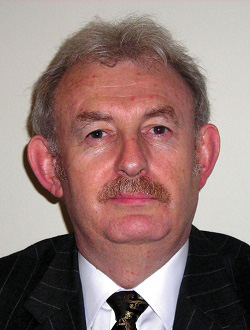Research Chairs and Senior Research Fellowships 2013-14
The work builds on the expertise at City, University of London in creating novel optical fibre sensor solutions where the critical advantage and ‘unique selling point’ is that (i) fibre optic sensors (FOSs) regularly permit measurements that are either impractical or uneconomical with conventional electronic measurement technology and (ii) are well suited to the systems integration needed for the applications considered. Typically, FOSs are extremely small in diameter, very light, resistant to corrosion and fatigue, capable of wide bandwidth operation and systems of such sensors can be configured to measure several parameters simultaneously. Since they are dielectric in nature, no electrical pathways are created within the host structure, permitting measurements where conventional sensors may not be used e.g. in the presence of explosive gases or conducting media e.g. sea water, or in aggressive infrastructure situations. The ability to network a number of optical fibre sensors, often using different optical transduction mechanisms and measuring different parameters on a single optical fibre network makes the sensing architecture much simpler for FOSs than conventional sensing technologies and is an important feature of this approach. A range of sensor configurations will be considered and developed, included fibres coated with proprietary, tailored and specially designed coatings on both conventional fibres or exploiting the properties of photonic crystal fibres and using Long Period and Bragg Gratings in the fibres, all where appropriate. An innovative programme of research, shown over the period of the grant, is underway, based around the following major technical themes: • Novel sensors using optical fibre-based techniques: design, evaluation and development of in-situ and remote sensors which are required to deal with often harsh and extreme working environments where conventional sensors regularly fail or are not well suited. The key advance will be in creating new sensor systems technologies to develop better solutions to several industry-driven problems. • Dynamic modelling and ‘data-to-solution’ assessment: the aim is to integrate the abundance (indeed frequent overabundance) of sensor data with infrastructure models with event scenarios, bringing both current state and future vulnerability into a single, predictive model. This involves creating effective and adaptive mechanisms to monitor, predict performance and then propose rapid and cost-effective actions required for improving infrastructural capacity, performance and resilience. The aim overall is for creating the capability for a generic approach, allowing systems designed to be readily adaptable and thus able to tackle a wide range of applications as new problems become evident.
Personal website: https://www.city.ac.uk/about/people/academics/kenneth-grattan

Related content
View all programmesSupport for research
The Academy runs a number of grants to support excellent researchers carry out engineering activities and to enable clo…
Research Chairs and Senior Research Fellowships
This scheme aims to strengthen the links between industry and academia, supporting academics in UK universities to unde…
